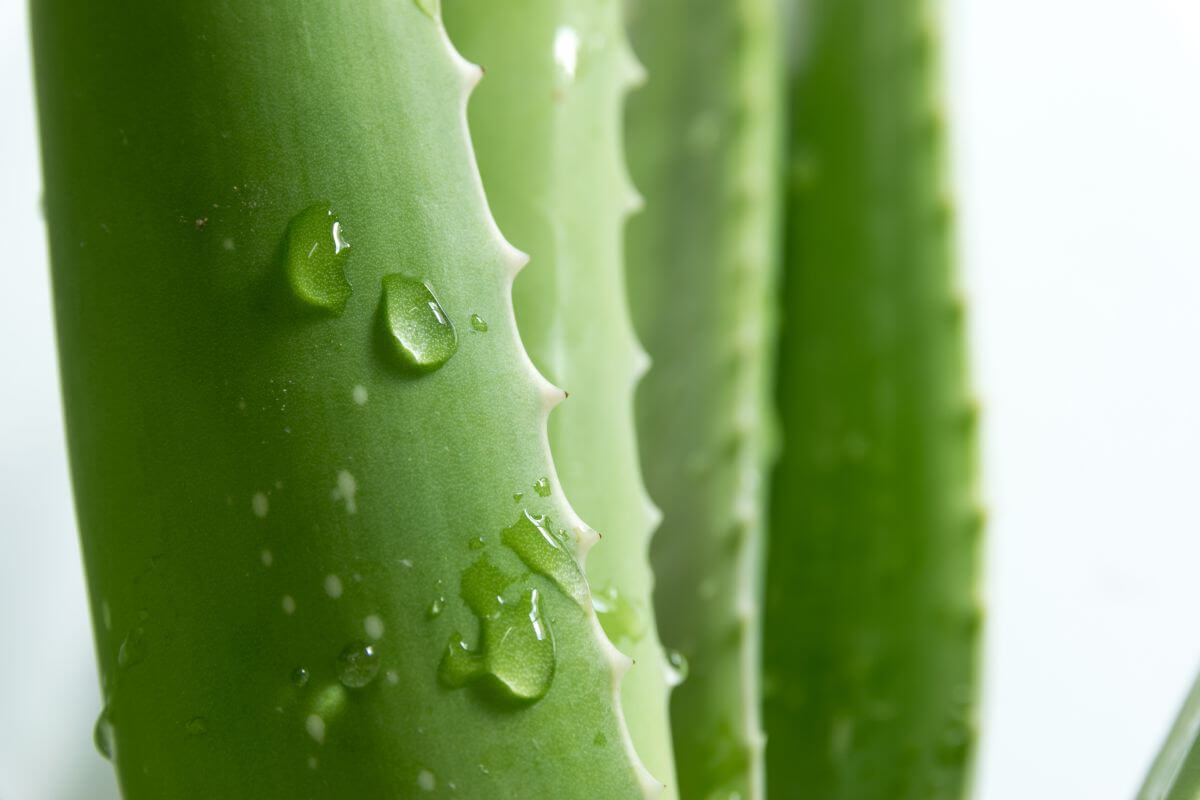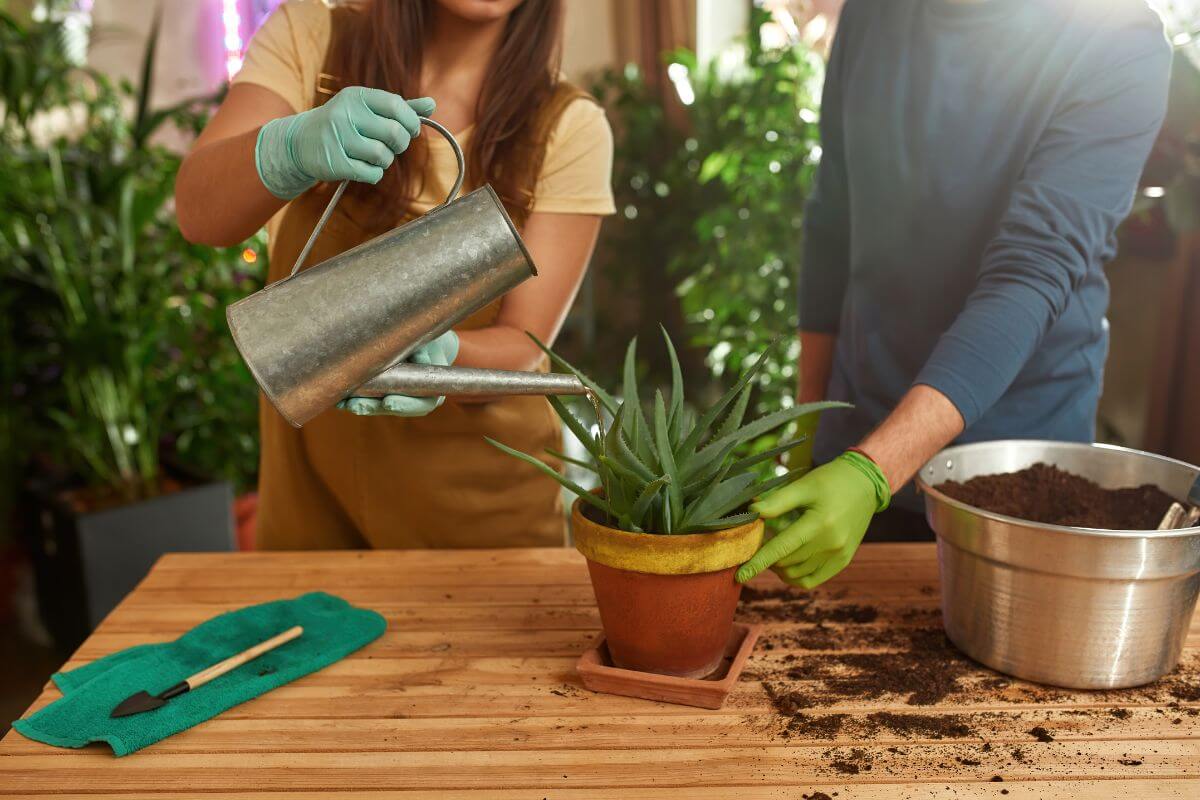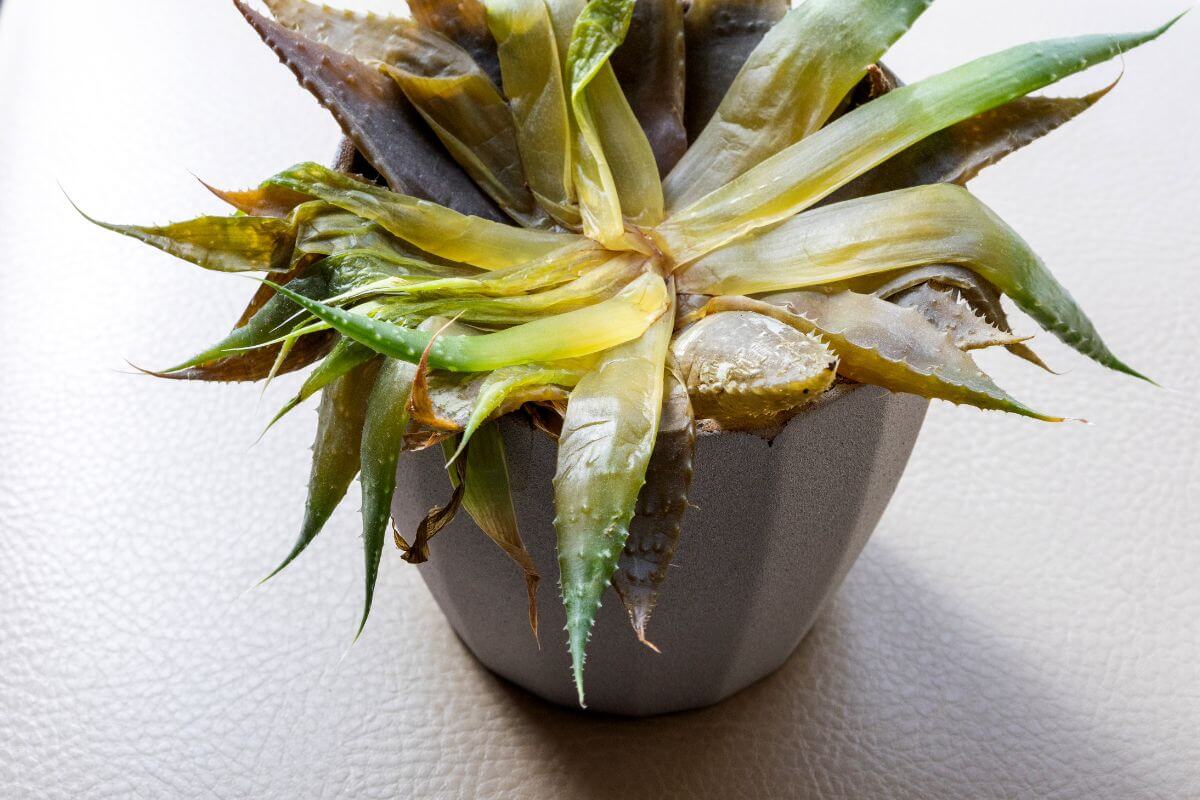Does your aloe vera plant look droopy despite your best efforts? Many plant lovers struggle with watering their aloe vera correctly. But don’t worry, I’ve got you covered with some easy tips to keep your succulent thriving.
Watering aloe vera isn’t rocket science, but it does require a bit of know-how. We’ll explore the right frequency, amount, and method to water your plant. Plus, we’ll look at signs that indicate whether you’re over or under-watering your green friend.
Ready to become an aloe vera watering pro? Let’s dive into the world of succulent care and discover how to give your aloe vera the perfect drink. Your plant will thank you with lush, healthy growth in no time!
- Related article: Aloe Vera Plant Overview
7 Key Takeaways on How to Water Aloe Vera
- Aloe vera plants need water only when the soil is dry at least 2 inches deep.
- Young aloe plants need water more often, usually once a week. Established plants need water less often.
- Water the plant until it drains from the pot. Let the excess water drain out completely.
- To avoid overwatering, make sure pots have drainage holes. Test soil moisture with your finger.
- Signs of overwatering include yellow or soft leaves, mold in the soil, and root rot.
- Bottom watering helps all roots get enough moisture and keeps the plant stable.
- Adjust watering based on climate, season, and plant maturity. Watch for signs of watering issues to keep your plant healthy.
How to Water Aloe Vera Plants
Watering aloe vera plants correctly ensures they stay healthy and vibrant. Here’s a simple guide on how to water aloe vera plants:
- Check the Soil Moisture – Wait until the soil is completely dry at least 2 inches below the surface before watering. This usually means watering every 3-4 weeks but can vary depending on your climate and growing conditions.
- Prepare for Watering – Move the plant to a sink or area where excess water can drain freely.
- Water Thoroughly – When it’s time to water, do so slowly and deeply until you see water coming out of the drainage holes at the bottom of the pot.
- Allow Excess Water to Drain – Make sure to allow for excess drain after watering to prevent root rot.
- Return the Plant to Its Spot – Once drainage has stopped, place the aloe back in its usual location.
- Monitor for Signs of Thirst – Look for thin, curled leaves or slight puckering, which can indicate the plant needs water. However, don’t wait for these signs before watering regularly.
- Adjust Watering Frequency – Water less frequently during winter months when the plant isn’t actively growing. For outdoor plants, rely on rainfall unless there’s a drought.
How Much Water Does the Aloe Vera Need?

The water needs of aloe vera depend on your environment. Is it dry or humid? What are the usual indoor and outdoor temperatures?
Dry Climates:
- Indoor Plants – Water every 2-3 weeks in summer. Water every 3-4 weeks in winter.
- Outdoor Plants – Water every 1-2 weeks in summer. Water every 3-4 weeks in winter.
Humid Climates:
- Indoor Plants – Water every 3-4 weeks in summer. Water every 4-6 weeks in winter.
- Outdoor Plants – Water every 2-3 weeks in summer. Water every 4-6 weeks in winter.
Temperature Considerations:
- Warm Temperatures (above 80°F/27°C) – Increase watering frequency a bit.
- Cooler Temperatures (below 50°F/10°C) – Reduce watering frequency a lot.
Test soil moisture with your finger to see how fast it dries. Aloes in bright, indirect light need more water than those in low light or shade.
Waterings should be deep. When you water, drench the soil and let the water drain out through the pot’s drainage holes.
When in doubt, it’s better to underwater than overwater. Aloe plants are drought-tolerant succulents and can recover more easily from underwatering than overwatering.
- Read more: How to Prevent Overwatering in Aloe Plant
How Often to Water Aloe Vera Plants
Knowing how to water your aloe vera plant is important. Established plants need less water. Usually, you only need to water them once or twice a week.
Younger plants need more frequent watering. They absorb water quickly because they are still growing. Regular watering also stops root rot.
Feel the soil to know when to water. If it feels dry, then it’s time to water.
Keeping a log of your watering schedule helps. This way, you can find a regular pattern for watering your aloe vera plant.
Should I Water the Aloe Vera From Top or Bottom?

Aloe vera can grow tall and wide which makes it top-heavy. This stresses the roots and causes the leaves to weaken and wilt.
To avoid this, water your aloe vera from the bottom. This way, all roots get equal water and the plant supports itself as it grows downward.
If you want to wet the leaves, mist them.
Signs of Aloe Vera Watering Issues
Watch for signs that your aloe vera needs help. Look for yellow leaves, wilted leaves, brown spots on leaf tips, dark green leaves turning pale, or blackened stems.
These issues might be due to watering or other problems that you should address.
1. Oedema (Edema)
Aloe vera plants can suffer from edema when they take in water faster than they use it. This often happens because of overwatering or poor drainage. You might see water-soaked spots, pimple-like growths, and blisters on the leaves. These blisters can burst and look white, powdery, or rust-colored.
To prevent and treat edema, use a potting mix that drains well. Make sure your pots have drainage holes. Keep an eye on soil moisture and avoid overwatering. Ensure good ventilation. Don’t remove affected leaves.
Edema shows that the plant is getting too much water. If not fixed, it can lead to root rot. By adjusting watering and improving growing conditions, aloe vera can recover. New, healthy growth will replace the damaged areas over time.
2. Leaf Discoloration

Check the leaf color of your aloe vera. They should be green. Yellow leaves mean too much water. Brown leaves mean too little water. Too much water can cause root rot.
Here are some other leaf signs to take note of:
- Soft Leaves – Aloe vera leaves are thick. If they get too wet, they can soften. Soft leaves mean the plant needs more air. Give it more light to help dry the leaves.
- Sagging Leaves – Leaves can sag, droop, or become leggy if they have too much water.
Make sure the container has good drainage. This keeps the soil moist but not too wet.
3. Mold Growing In The Soil
You might see mold at the base of the stem. It can be white, gray, black, or dark green. Mold won’t hurt your plant directly, but it shows bad soil conditions and can cause fungal diseases.
To get rid of mold, follow these steps:
1. Take the plant out of its pot.
2. Wash off the old dirt.
3. Put new potting mix in the hole where the plant was.
Make sure the new soil drains well. This will boost the plant’s health. Regular care should stop mold from coming back.
4. Root Rot
Root rot is a common problem with aloe vera plants. It happens when the soil stays too wet from overwatering. Wet soil stops the roots from getting enough oxygen. This lack of oxygen kills the roots.
When roots can’t get oxygen, the whole plant suffers. The leaves turn yellow and fall off. If you don’t fix it, the plant might die.
The pot’s material also matters. Terracotta or unglazed clay pots absorb moisture faster than plastic ones. This helps keep your aloe from getting too wet.
How to Water Aloe Vera Plants Final Thoughts
Caring for aloe vera plants goes beyond just watering. You need to give them the right amount of sun, food, and protection from bugs. I’ve found that when I stick to a good routine, my aloes thrive without any fuss.
Let’s break down what your aloe needs to stay happy:
• Sunlight – Lots of bright, indirect light
• Water – Just enough to keep the soil moist
• Fertilizer – A light feeding during growing seasons
• Pest control – Regular checks for any unwanted visitors
By keeping up with these basics, you’ll have healthy aloes in no time. Trust me, it’s easier than it sounds! Have you ever grown aloe before? What’s been your experience?
How to Water Aloe Vera Plants FAQs
1. How Often Should I Water My Aloe Vera Plant?
Water your aloe vera plant when the soil is completely dry at least 2 inches below the surface, typically every 3-4 weeks, but adjust based on your climate and growing conditions.
2. What Are the Signs That My Aloe Vera Plant Is Overwatered?
Signs of overwatering include yellowed leaves, soft or wilted leaves, mold in the soil, and root rot.
3. How Can I Tell If My Aloe Vera Plant Needs Water?
Insert your finger into the soil; if it feels dry, it’s time to water. If it’s still moist, wait until it dries out.
4. Should I Water Aloe Vera Plants From the Top or Bottom?
Water aloe vera plants from the bottom to ensure all roots receive adequate moisture and to prevent top-heaviness.
5. How Do I Address Mold Growing in the Soil of My Aloe Vera Plant?
Remove the plant from its pot, clean off the old soil, and repot with new, well-draining potting mix to improve drainage and prevent mold growth.
If you’d like more information on how to maintain healthy aloe vera plants, check out these other articles:


